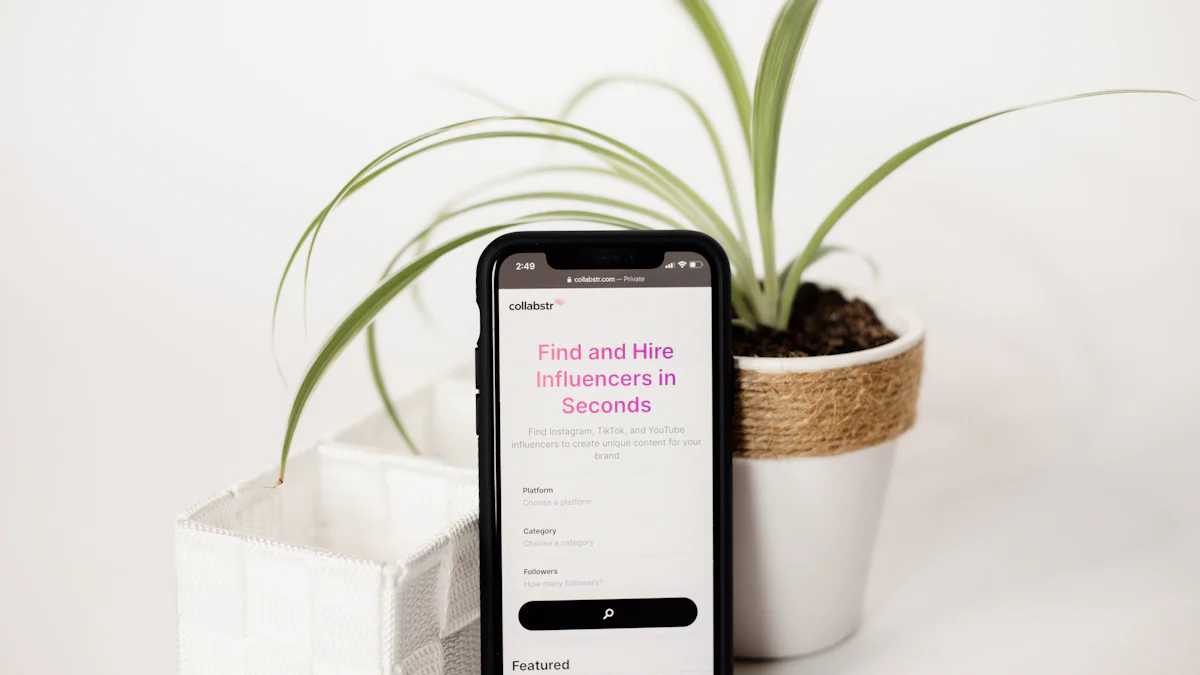Mastering Your First Sponsored Post

A sponsored post is a powerful tool in digital marketing, especially when considering what is first post sponsored. It allows brands to reach their target audience through influencers who create engaging content. This form of content marketing has become essential, with 71% of influencers reporting that sponsored posts are their most lucrative revenue stream. For your first sponsored post, understanding its significance is crucial. It not only boosts brand visibility but also enhances audience trust. Sponsored content often trends better than unpaid content, offering a win-win for both influencers and brands. Embrace this opportunity to monetize your efforts and build lasting partnerships.
Understanding Your Audience for Effective Sponsored Content

Creating effective sponsored content starts with knowing your audience inside and out. You need to understand who they are, what they like, and how they engage with content. This knowledge helps you craft messages that resonate and drive engagement.
Identifying Your Target Audience
Analyzing demographics and interests
To identify your target audience, start by analyzing their demographics and interests. Look at age, gender, location, and other relevant factors. These details paint a picture of who your audience is. For instance, if your followers are mostly young adults, your sponsored content should reflect their interests and lifestyle.
Using audience insights tools
Audience insights tools can be your best friend here. Platforms like Facebook and Instagram offer analytics that reveal who interacts with your posts. Use these tools to gather data on your audience's behavior and preferences. This information guides you in creating content that speaks directly to them.
Tailoring Content to Audience Preferences
Aligning content style with audience expectations
Once you know your audience, tailor your content to meet their expectations. If they prefer visual content, focus on high-quality images or videos. If they enjoy storytelling, weave narratives into your posts. Remember, 46% of social media users will unfollow a brand for posting too many promotional messages. So, balance promotional content with engaging stories.
Incorporating audience feedback
Feedback from your audience is invaluable. Pay attention to comments, likes, and shares. These interactions tell you what works and what doesn't. Use this feedback to refine your approach and create more effective sponsored content. Engaging with your audience not only builds trust but also enhances the impact of your sponsored posts.
Setting Clear Goals for Your First Sponsored Post
When diving into your first sponsored post, setting clear goals is crucial. You want to ensure your efforts align with your overall marketing strategy and achieve the desired outcomes. Without clear objectives, your sponsored content might miss the mark, leaving both you and the brand unsatisfied.
Defining Objectives for Sponsored Content
Before you start crafting your sponsored content, take a moment to define what you want to achieve. This step is essential for guiding your content creation and measuring success.
Increasing brand awareness
One common goal for sponsored posts is to boost brand awareness. You want more people to know about the brand you're promoting. To do this effectively, focus on creating engaging and shareable content. Highlight the brand's unique features and benefits in a way that resonates with your audience. Remember, the more people see and share your content, the more awareness you'll generate.
Driving traffic or sales
Another objective might be driving traffic to a website or increasing sales. If this is your goal, make sure your sponsored content includes clear calls to action. Encourage your audience to visit the brand's website or check out a specific product. Use persuasive language and visuals to entice them to take the next step. This approach can turn your sponsored post into a powerful tool for generating leads and sales.
Measuring Success of Sponsored Content
Once you've set your goals, it's time to think about how you'll measure success. Knowing what metrics to track will help you understand if your sponsored content is hitting the mark.
Key performance indicators (KPIs)
Key performance indicators, or KPIs, are essential for evaluating the effectiveness of your sponsored post. Depending on your goals, these might include metrics like reach, engagement, clicks, or conversions. For instance, if your aim is brand awareness, focus on reach and engagement. If you're driving sales, track clicks and conversions. By monitoring these KPIs, you can gauge the success of your sponsored content and make necessary adjustments.
Tools for tracking performance
To effectively measure your sponsored post's performance, leverage various tools available. Platforms like Google Analytics and social media insights offer valuable data on how your content is performing. These tools provide detailed reports on metrics like traffic, engagement, and conversions. By analyzing this data, you can refine your marketing strategy and create more effective sponsored content in the future.
Setting clear goals and measuring success are vital steps in mastering your first sponsored post. By defining objectives and tracking performance, you ensure your sponsored content aligns with your marketing strategy and delivers the desired results. Embrace this process to create impactful and effective sponsored content that benefits both you and the brand.
Choosing the Right Platform for Sponsored Posts

Selecting the right platform for your sponsored social media post can make all the difference. Each platform has its own unique audience and features, so understanding these differences is key to maximizing your content marketing efforts.
Evaluating Different Social Media Platforms
Understanding platform demographics
When choosing a platform, start by looking at the demographics. Each social media site attracts different age groups, interests, and behaviors. For instance, Instagram tends to have a younger audience, while Facebook might cater to a more diverse age range. Knowing who uses each platform helps you align your sponsored content with the right audience. This alignment ensures that your message reaches those most likely to engage with it.
Matching platform features with content type
Next, consider the features each platform offers. Some platforms are better suited for visual content, while others excel in text-based posts. Instagram and Pinterest, for example, are great for image-heavy content, whereas LinkedIn might be better for professional articles. Match your content type with the platform's strengths to enhance your marketing strategy. This approach not only boosts engagement but also ensures your content resonates with the audience.
Leveraging Platform-Specific Features
Utilizing hashtags and tags
Hashtags and tags are powerful tools for increasing the visibility of your sponsored posts. They help categorize your content and make it discoverable to a broader audience. On platforms like Twitter and Instagram, using relevant hashtags can significantly boost your reach. Choose hashtags that align with your content and audience interests. This strategy enhances your content marketing efforts by connecting you with users interested in similar topics.
Engaging with platform communities
Engagement is crucial for the success of your sponsored content. Each platform has its own community dynamics, so take the time to understand them. Join groups, participate in discussions, and respond to comments. This interaction builds trust and fosters a sense of community around your brand. Engaging with users not only increases the effectiveness of your sponsored social media post but also strengthens your overall marketing strategy.
By carefully selecting the right platform and leveraging its features, you can create a sponsored post that truly resonates with your audience. This thoughtful approach to content marketing ensures that your efforts align with your broader marketing strategy, delivering impactful results.
Crafting Engaging and Compliant Sponsored Content
Creating a sponsored post that captivates your audience while adhering to regulations can be a rewarding challenge. Let's dive into how you can craft engaging content that resonates with your readers and stays compliant with guidelines.
Creating Authentic and Relatable Content
To create sponsored content that truly connects, focus on authenticity and relatability. Your audience wants to see genuine stories and experiences, not just advertisements.
Storytelling techniques
Storytelling is a powerful tool in content marketing. It allows you to weave unique story angles into your sponsored content, making it more engaging. Think about how the brand or product fits into your life or the lives of your audience. Share personal anecdotes or customer stories that highlight the benefits and features of the product. This approach not only makes your content more relatable but also builds a narrative that your audience can connect with.
Visual and textual elements
Visuals play a crucial role in making your sponsored post stand out. Use high-quality images or videos that complement your story. Pair these visuals with compelling text that highlights key points. Keep your language simple and direct, ensuring that your message is clear. Remember, engaging content often combines strong visuals with concise and impactful text to capture attention and convey your message effectively.
Ensuring Compliance with Sponsored Post Regulations
While crafting your sponsored content, it's essential to stay compliant with regulations. This not only protects you legally but also builds trust with your audience.
Understanding FTC guidelines
The Federal Trade Commission (FTC) has clear guidelines for sponsored content. These rules ensure transparency and protect consumers from deceptive practices. You must understand these guidelines to avoid legal issues. The FTC requires that you clearly disclose any material connections between you and the brand. This means if you're paid or receive free products, you need to inform your audience.
Properly disclosing sponsored content
Transparency is key when you create sponsored content. You should always disclose to your readers that your post is sponsored. Use clear and straightforward language, such as "This post is sponsored by [Brand]." Place this disclosure where it's easily noticeable, like at the beginning of your post. Proper disclosure not only complies with regulations but also enhances your credibility. Your audience will appreciate your honesty, which can lead to stronger relationships and more successful collaborations.
By focusing on storytelling and compliance, you can create sponsored content that is both engaging and trustworthy. These blogging tips will help you navigate the world of sponsored posts with confidence, ensuring that your content marketing efforts are both effective and ethical. Remember, great advice often comes from understanding your audience and maintaining transparency in your collaborations.
You've now got the tools to master your first sponsored post. Let's recap the key steps:
-
Understand Your Audience: Dive deep into who they are and what they love. This ensures your sponsored content hits the mark.
-
Set Clear Goals: Know what you want to achieve. Whether it's boosting brand awareness or driving sales, clarity is crucial.
-
Choose the Right Platform: Pick where your audience hangs out. Tailor your content to fit the platform's vibe.
-
Craft Engaging Content: Be authentic. Use storytelling to make your sponsored content relatable and memorable.
-
Stay Compliant: Follow guidelines to maintain trust and transparency with your audience.
Now, it's your turn. Apply these tips and experiment with your content. Remember, successful sponsored content not only benefits you but also builds lasting partnerships. As a blogger from Swoon Worthy shared, creating content that readers enjoy leads to successful collaborations. So, go ahead and make your first post sponsored a hit!
FAQ
What is a sponsored post?
A sponsored post is a piece of content that you create in collaboration with a brand or sponsor. The goal is to promote their products, services, or message. Think of it as a partnership where you help the brand reach your audience through engaging content.
Why should I consider incorporating sponsored posts into my content strategy?
Incorporating sponsored posts can lead to financial gain and help you build strong relationships with brands. These partnerships can open doors to new opportunities and enhance your content strategy by adding diverse and engaging material.
How do I disclose sponsored content on social media?
Transparency is key when it comes to sponsored content. You should clearly state that a post is sponsored. Use phrases like "This post is sponsored by [Brand]" at the beginning of your post. This honesty builds trust with your audience and keeps you compliant with regulations.
How can I ensure my sponsored content resonates with my audience?
To make sure your sponsored content resonates, understand your audience's preferences and interests. Tailor your content to align with what they love. Use storytelling and relatable visuals to create a connection. Engaging content often leads to better audience interaction.
What platforms are best for sponsored posts?
The best platform depends on your audience and content type. Instagram and Pinterest work well for visual content, while LinkedIn suits professional articles. Evaluate each platform's demographics and features to choose the one that aligns with your goals.
How do I measure the success of my sponsored posts?
Measure success by tracking key performance indicators (KPIs) like reach, engagement, clicks, or conversions. Use tools like Google Analytics and social media insights to gather data. This information helps you understand how well your content performs and where to improve.
What are some storytelling techniques for creating engaging sponsored content?
Storytelling can make your content more engaging. Share personal anecdotes or customer stories that highlight the product's benefits. Use visuals and concise text to support your narrative. This approach makes your content relatable and memorable.
How do I stay compliant with sponsored post regulations?
Stay compliant by understanding and following the Federal Trade Commission (FTC) guidelines. Clearly disclose any material connections with the brand. Transparency not only keeps you within legal boundaries but also enhances your credibility with your audience.
Can sponsored posts help increase brand awareness?
Yes, sponsored posts can significantly boost brand awareness. By creating engaging and shareable content, you introduce the brand to a wider audience. Highlight the brand's unique features in a way that resonates with your followers to maximize impact.
How do I choose the right brand to partner with for sponsored content?
Choose a brand that aligns with your values and audience. Look for partnerships where the brand's products or services naturally fit into your content. This alignment ensures authenticity and enhances the effectiveness of your sponsored posts.
See Also
Become a UGC Creator: Essential Skills to Master
Deciding on Influencers Versus Brand Ambassadors
Key Skills Every Brand Ambassador Needs in 2024
